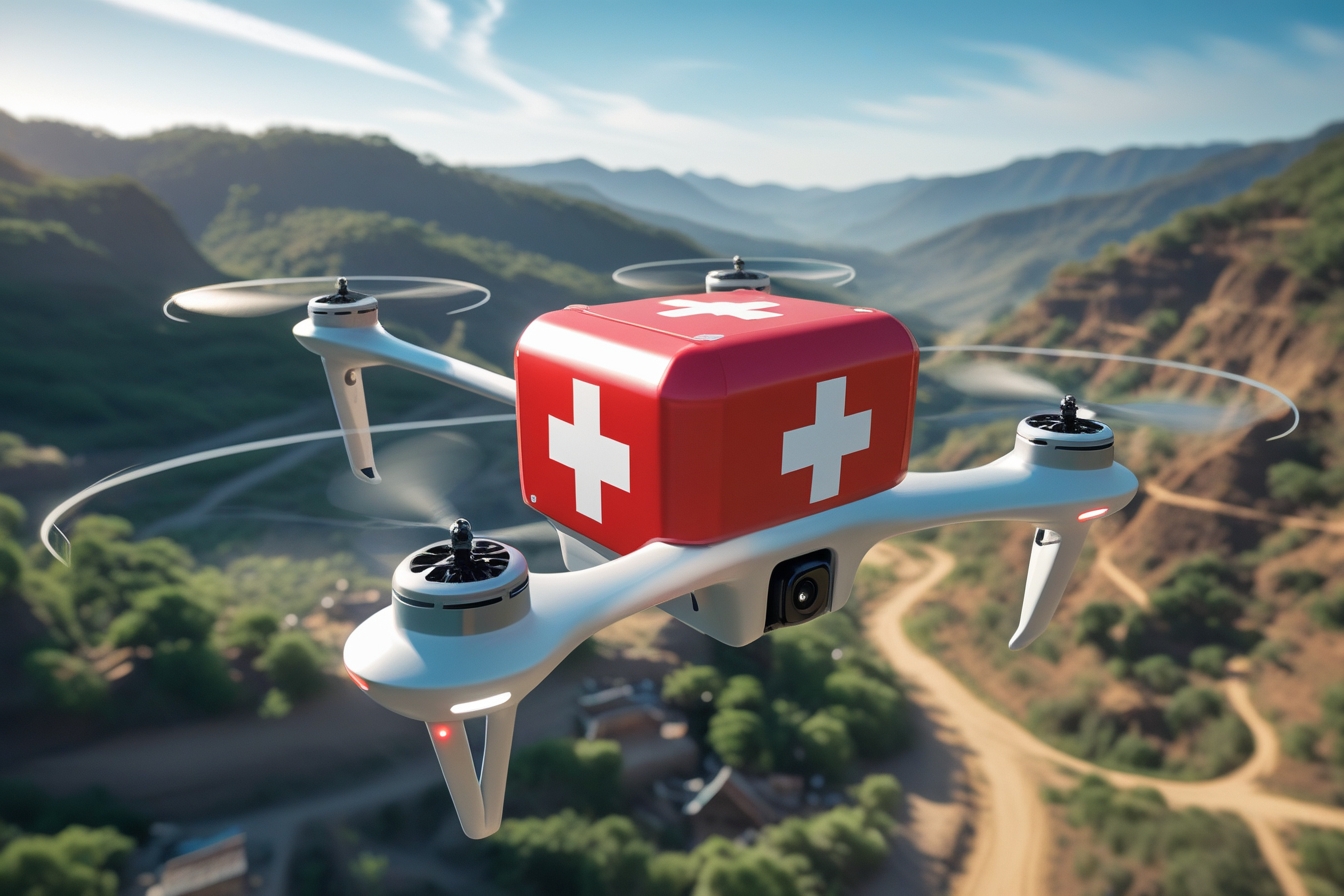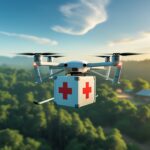Medical supply chains are undergoing a massive transformation, thanks to the integration of drone technology. Traditionally, delivering medical supplies, especially to remote or disaster-stricken areas, has been slow, costly, and sometimes unreliable. Drones are changing that by offering faster, more efficient, and cost-effective solutions.
The Growing Need for Innovation in Medical Supply Chains
Challenges in Traditional Medical Logistics
Medical supply chains have always faced hurdles, including:
- Geographic Barriers: Delivering medical supplies to remote or rural areas can be difficult due to poor infrastructure or harsh weather conditions.
- Time Sensitivity: Emergency medical deliveries like blood, vaccines, and medications require rapid transportation.
- High Costs: Traditional delivery methods using trucks, motorcycles, or helicopters can be expensive and inefficient.
The Role of Drones in Healthcare Logistics
Drones, also known as Unmanned Aerial Vehicles (UAVs), are stepping in to bridge these gaps. With advanced navigation systems, real-time tracking, and the ability to bypass road congestion, drones are making healthcare more accessible and efficient.
How Drones Are Transforming Medical Supply Chains
1. Faster Emergency Response Times
Time is critical in emergencies. Drones can transport life-saving supplies such as:
- Blood and Plasma: Rapid delivery of blood units for emergency surgeries or trauma cases.
- Defibrillators: In cardiac arrest situations, drones can carry automated external defibrillators (AEDs) to the patient before paramedics arrive.
- Organs for Transplant: Some regions are testing drones to transport organs, ensuring they reach transplant recipients quickly and safely.
2. Enhanced Accessibility to Remote Areas
In rural areas where hospitals or pharmacies are miles away, drones provide essential healthcare services by delivering:
- Medications: Chronic disease patients receive medications without traveling long distances.
- Vaccines: Immunization programs in hard-to-reach areas benefit from timely vaccine delivery.
- Diagnostic Samples: Drones can transport blood and lab samples for quick analysis, speeding up diagnosis and treatment.
3. Cost Reduction in Medical Deliveries
Drones reduce operational costs by:
- Eliminating fuel and labor expenses associated with traditional transport.
- Reducing spoilage of temperature-sensitive drugs like insulin and vaccines by ensuring faster delivery.
- Cutting logistics costs for hospitals, especially in regions with limited infrastructure.
4. Disaster Relief and Humanitarian Aid
During natural disasters, transportation routes are often blocked, making drone deliveries crucial for:
- Emergency First Aid Kits: Drones deliver bandages, antibiotics, and painkillers to affected areas.
- Water and Food Supplies: Essential sustenance reaches stranded populations quickly.
- Disease Prevention: Rapid distribution of vaccines and mosquito nets helps prevent outbreaks.
Real-World Examples of Drones in Healthcare
1. Zipline: Leading the Way in Medical Drone Deliveries
Zipline, a California-based company, is a pioneer in using drones for medical supply chains. Operating in countries like Rwanda, Ghana, and now the U.S., Zipline’s drones have delivered over 5 million medical supplies, including blood and vaccines.
2. UPS Flight Forward: Expanding Medical Logistics
UPS Flight Forward has partnered with hospitals to transport lab samples using drones, reducing wait times for critical tests and improving patient care.
3. Drone Projects in the U.S.
Hospitals and healthcare providers in the U.S. are increasingly adopting drones, especially for delivering prescription medications to elderly or homebound patients. The FAA has granted approvals for companies to test and scale medical drone delivery networks.
Challenges and Future of Medical Drones
Regulatory Hurdles
- FAA Regulations: The Federal Aviation Administration (FAA) imposes strict guidelines on drone operations, requiring approval for autonomous flights.
- Privacy and Security Concerns: Ensuring patient data security and preventing drone hacking is a top priority.
- Air Traffic Management: With increasing drone usage, managing airspace safety becomes crucial.
Advancements in Drone Technology
The future of medical drones looks promising with:
- AI-Powered Navigation: Improving precision in deliveries and avoiding obstacles.
- Longer Battery Life: Extending the range for more efficient supply chains.
- Autonomous Drone Networks: Reducing dependency on human operators for better scalability.
Conclusion: A New Era in Medical Supply Chains
Drones are no longer just a futuristic concept—they are actively reshaping the medical logistics landscape. With faster emergency response, improved accessibility, cost reductions, and enhanced disaster relief capabilities, drones offer a revolutionary solution for modern healthcare challenges.
As technology advances and regulations evolve, we can expect drones to become a permanent fixture in medical supply chains, ensuring life-saving treatments reach those in need faster and more efficiently than ever before.



